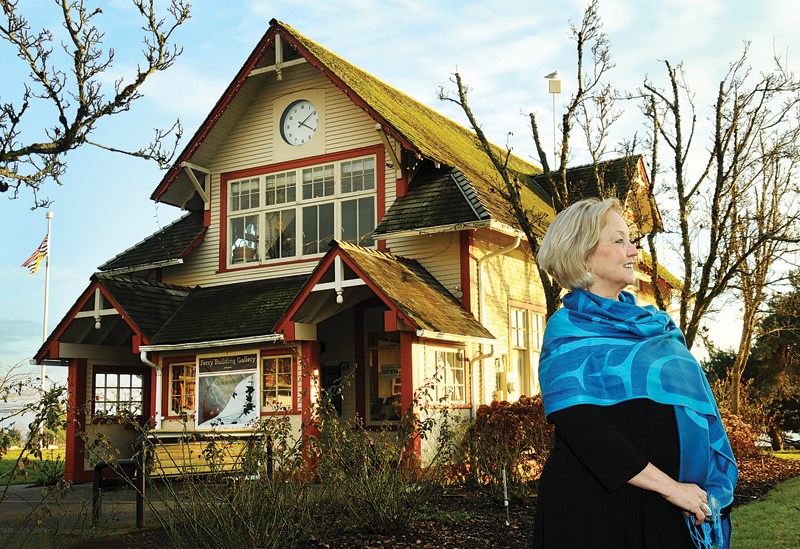It’s the little gallery that could and did.
That’s how Ruth Payne describes the small space on West Vancouver’s waterfront where she has served as visual arts co-ordinator for 22 years.
The Ferry Building Gallery holds a long history in the neighbourhood and Payne has helped oversee and grow art exhibitions and community programming there since 1994 when she was hired for a part-time position that quickly turned into full time.
“It was fun for me. It was a growing phase,” she says of the early days. “I like creating and building something up, so for me it’s been a privilege.”
But all good things must come to an end, and Payne officially retired from her position at the end of January. She is staying on part-time to help train her eventual replacement.
“It’s bittersweet because I love my job; I love the artists; I love the gallery patrons; I love the staff; I love the volunteers,” she notes. “It’s been a privilege to create, with my team, a welcoming space here in the gallery.”
As West Vancouver embarks on a new arts and culture strategy, Payne says there’s a whole new phase of arts coming to the district and it’s a good time for her to move on.
“I also really know that this gallery and the growth of the arts in West Vancouver will continue,” she adds.
But there is a 22-month-old grandson to spend more time with, some exploring to do in Peru, and maybe even an art class to take. Payne says she is really excited about her future, but will miss her work at the gallery.
A lot of well-known artists got their start there, she notes, including Ross Penhall and Bobbie Burgers.
When she started at the gallery, Payne didn’t realize exactly what her role would become.
“I thought: it will be fun. It’s just a little, quiet gallery. I’ll just put up the exhibitions and then the rest of the time I can work on my art and painting and I can do other work,” she recalls.
Ten hours a week quickly turned into a full-time job and Payne loved every minute of it.
“There was a lot to grow,” she reports.
The Ferry Building Gallery is the public gallery for West Vancouver. It regularly offers a variety of exhibitions, programs, workshops, and art tours. Harmony Arts Festival was in its infancy at the time Payne started working with the gallery, but it has since grown to an annual 10-day event along the waterfront that features artists, educators, and musicians, and she and her team had a hand in the growth of that as well.
Today the gallery welcomes more than 500 visitors each week and hosts up to 20 exhibitions annually. It is operated by West Vancouver Cultural Services and is partially funded by the district. According to its website, the gallery’s mandate is to “enliven, enrich, engage, inform and educate the public by presenting a diversity of stimulating and high-quality juried exhibits and displays which maintain a standard of excellence.”
And Payne believes they have done just that. Another unique element of its programming is its aim to support the development of both established and emerging artists.
“It’s really become a celebration,” says Payne of the gallery. “It’s an arts and culture community centre of sorts, even though it’s tiny.”
Although small in space, the Ferry Building is huge in terms of community connection. It started more than 100 years ago as an office and waiting area for the ferry service that took travellers from West Vancouver across the Burrard Inlet. Boat passengers purchased their tickets downstairs in the 800-square-foot office and then waited for their ride. The upstairs was used as a boardroom for various organizations. After the Lions Gate Bridge was built in 1939, ferry service dwindled and eventually the service changed from ferry to bus.
The little-building-that-could welcomed a new set of passengers, crew, and service staff until 1986 when the bus company moved to a new location in North Vancouver. After threats of demolition, many art groups, local politicians, and residents lobbied over years to save the waterfront building, and after much planning and some renovation, the Ferry Building finally opened its doors as a public art gallery in July 1989.
Since then it has grown into a hub of artistic activity in Ambleside, and Payne says she feels honored to have been a part of it. One of her goals was to create high quality, professionally curated and installed exhibitions and programs, but at the same time create a welcoming space and demystify the art gallery experience. She believes she and her team have done that.
“We have a very inclusive, very eclectic programming schedule,” she says.



